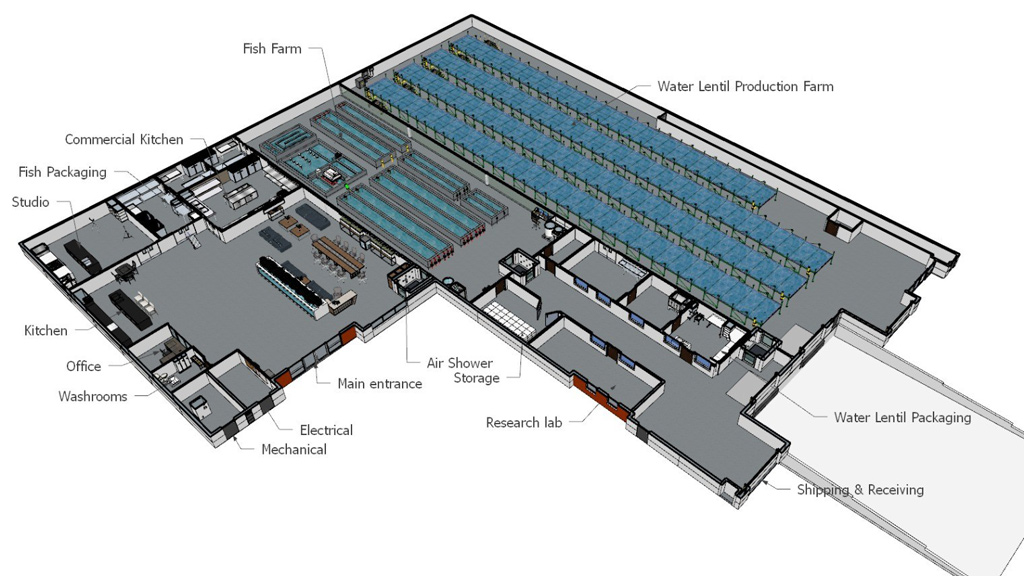SURREY, B.C. — Pontus Protein Ltd. has submitted a construction application to Surrey officials to build a 20,570 square foot aquaponics facility.
Pontus expects the approval process to be finished within six weeks. After approval, Pontus intends to immediately begin construction of the facility’s leasehold improvements.
The leasehold improvements include a total retrofit of the facility to establish Pontus’ solar-powered, water recycling CEVAST aquaponic system. The installation of all required equipment for the growth and production is estimated to take between four and six months to wrap up.
After the retrofit is completed, the facility will be approximately 20 times the size of Pontus’ prior prototype facility. The prototype facility has been used to test and develop the technology of Pontus’s proprietary growing process.
The facility will feature solar energy panels to capture renewable energy and run the closed-loop water system, which recycles up to 95 per cent of all water inputs.
Pontus stated the implementation of the facility’s sustainable technology in tandem with its proprietary CEVAS automated growth system will allow the company to focus on biosecurity in its agricultural production processes, eliminating the need for additional chemicals, pesticides and other non-native components.
“Entering the construction application process is a major milestone for the company as we move toward the commissioning of the facility,” said Conner Yuen, Pontus CEO. “Our aim is to create a state-of-the-art process that will incorporate the latest in sustainable agriculture technology. The ability to implement this highly efficient technology solves many issues we see with current methods of food production such as land scarcity and low yields and contamination.”











Recent Comments
comments for this post are closed